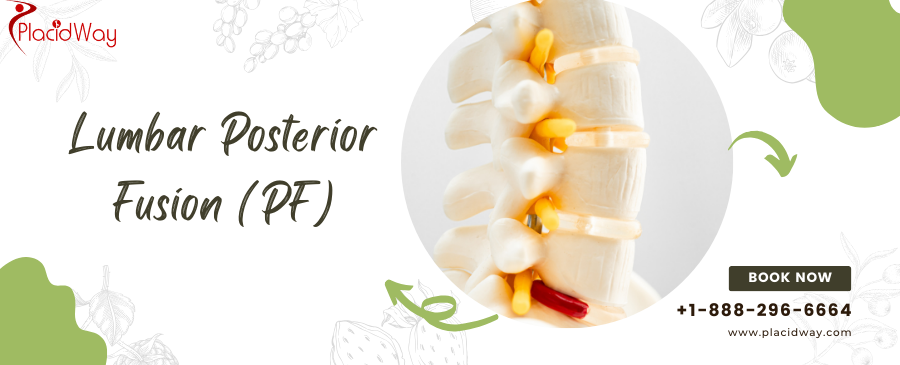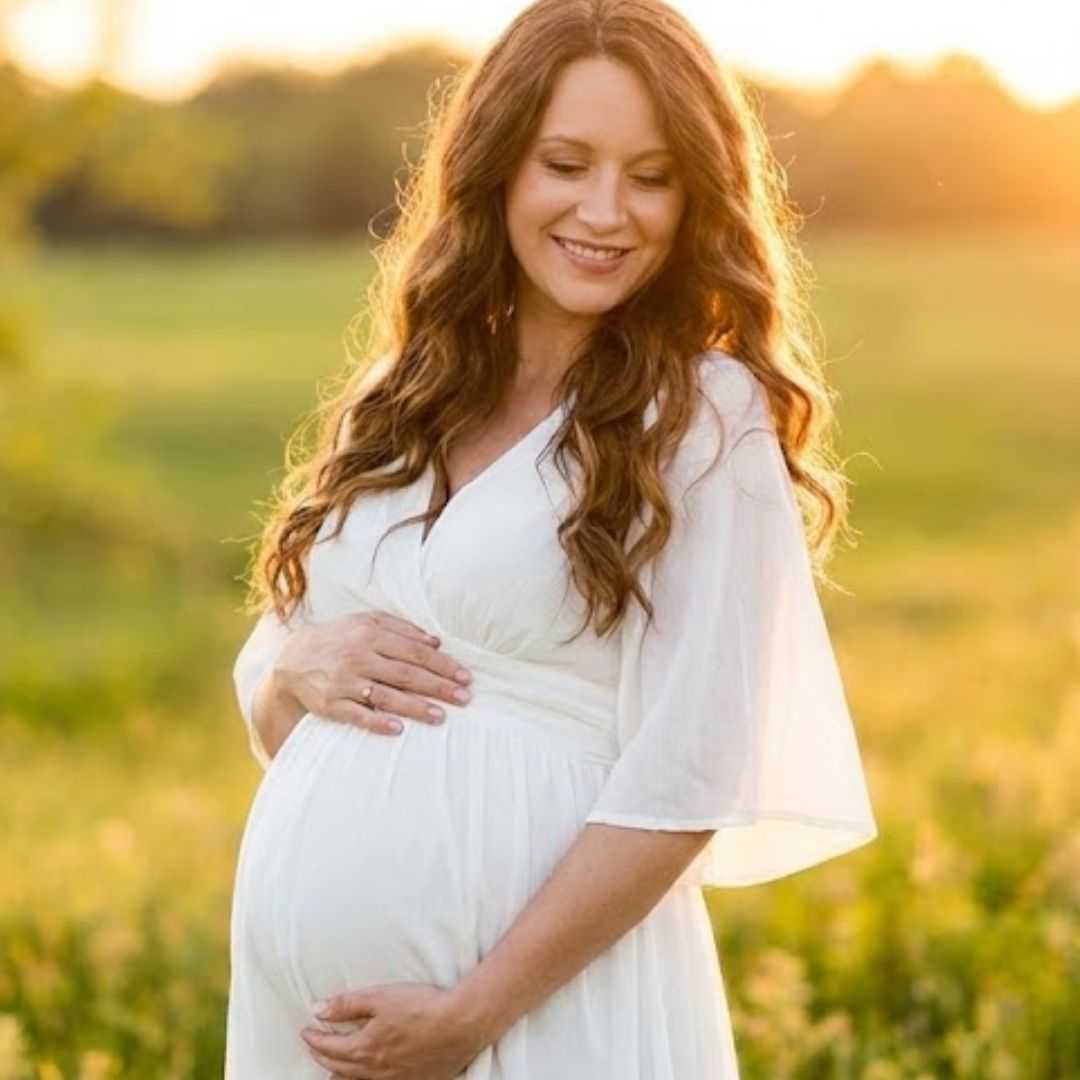
Finding Relief: Your Guide to Lumbar Posterior Fusion for Chronic Back Pain
Living with persistent lower back pain can be debilitating, impacting every aspect of your life – from simple daily tasks to your overall quality of life. If you've explored conservative treatments without success, Lumbar Posterior Fusion (LPF) might be a solution worth considering. This crucial spinal surgery aims to stabilize your spine, alleviate nerve compression, and ultimately provide lasting relief from chronic pain.
For many patients, especially those facing high costs or long wait times in their home countries, seeking advanced spinal care like Lumbar Posterior Fusion abroad has become a viable and attractive option. Medical tourism offers access to world-class surgeons, state-of-the-art facilities, and often significant cost savings, making quality healthcare more accessible than ever before.
This comprehensive guide will walk you through everything you need to know about Lumbar Posterior Fusion: from understanding the symptoms and causes of the conditions it treats, to exploring the procedure itself, recovery expectations, potential risks, and the unique advantages of choosing to have your spine fusion surgery abroad. We'll delve into questions like "what is posterior lumbar fusion?", "how much does lumbar fusion cost?", "recovery time for spinal fusion," and "best countries for spine surgery," helping you make an informed decision on your journey to a pain-free life.
Whether you're searching for "lumbar fusion surgery cost abroad," "spinal fusion alternatives," or simply "what to expect after back surgery," you'll find the answers here. Let's explore how Lumbar Posterior Fusion can help you regain mobility and improve your quality of life.
What symptoms indicate a need for Lumbar Posterior Fusion?
If you're experiencing chronic lower back pain, it's natural to wonder if a significant procedure like Lumbar Posterior Fusion is necessary. The decision for spine surgery is rarely taken lightly and usually follows a period of unsuccessful non-surgical treatments. Key symptoms that often point towards the need for lumbar fusion include:
- Persistent Lower Back Pain: This is the most common symptom, often described as a dull ache or sharp, shooting pain. It might worsen with activity, standing, or prolonged sitting. Patients often search for "chronic low back pain treatment" or "why does my lower back hurt so much?"
- Radicular Pain (Sciatica): Pain that radiates from the lower back down into one or both legs, sometimes accompanied by numbness, tingling, or weakness. This happens when nerves are compressed. You might be looking for "sciatica relief surgery."
- Leg Weakness or Numbness: Difficulty lifting your foot (foot drop), weakness in your leg muscles, or a sensation of "pins and needles" are signs of nerve impairment.
- Spinal Instability: A feeling that your back "gives out" or is unstable, often leading to increased pain with certain movements. This can be a key indicator for fusion.
- Difficulty Walking or Standing: Pain and weakness can make it challenging to maintain an upright posture or walk for extended periods. This might relate to "spinal stenosis symptoms."
- Symptoms Unresponsive to Conservative Care: If physical therapy, medication, injections, and activity modification haven't provided sufficient relief over several months, surgery may be considered.
These symptoms are often linked to conditions like degenerative disc disease, spondylolisthesis (vertebra slipping forward), or severe spinal stenosis (narrowing of the spinal canal).
What causes the underlying spinal instability treated by Lumbar Posterior Fusion?
Lumbar Posterior Fusion addresses various conditions that cause instability or nerve compression in the lower spine. Understanding the "causes of back instability" can clarify why this surgery might be recommended:
- Degenerative Disc Disease (DDD): As we age, the discs between vertebrae can lose hydration, flatten, and sometimes tear. This leads to reduced disc height, bone spurs, and instability. Patients often search for "degenerative disc disease treatment options."
- Spondylolisthesis: This condition occurs when one vertebra slips forward over the one below it. It can be caused by degeneration, trauma, or a congenital defect (spondylolysis). Fusion stabilizes the slipped vertebra. Searching for "spondylolisthesis surgery" will often lead to fusion.
- Spinal Stenosis: Narrowing of the spinal canal can compress the spinal cord and nerves. While decompression (laminectomy) is often the primary treatment, if significant instability is created or already present, fusion may be added.
- Spinal Deformities (e.g., Scoliosis, Kyphosis): Severe curvatures of the spine in the lumbar region can cause pain and instability, requiring fusion to correct alignment and stabilize the spine.
- Spinal Trauma/Fractures: Injuries that cause unstable vertebral fractures may necessitate fusion to stabilize the damaged segment and prevent further neurological damage.
- Previous Failed Back Surgery (Failed Back Surgery Syndrome - FBSS): Sometimes, prior surgeries (like laminectomy) might lead to subsequent instability, requiring a fusion to correct the issue.
- Tumors or Infections: In rare cases, spinal tumors or severe infections can weaken the vertebrae, making fusion necessary after their removal to restore stability.
Risk factors for developing these conditions include age, genetics, obesity, smoking, and certain occupational activities involving heavy lifting or repetitive motions.
What types of Lumbar Posterior Fusion procedures are available?
While the goal of all lumbar fusion surgeries is to join vertebrae, the "type of spinal fusion surgery" can vary based on the surgical approach and how the bone graft is placed. The "posterior" aspect means the surgery is performed from the back. Key types include:
- Posterolateral Fusion (PLF): This is one of the most common types. The surgeon places bone graft material in the "posterolateral gutter" – the space between the transverse processes (small bony projections on the side of the vertebrae). Rods and screws are used to stabilize the spine while the bone graft fuses the vertebrae.
- Posterior Lumbar Interbody Fusion (PLIF): In this technique, the surgeon removes the disc between the vertebrae from the back, inserts a bone graft (often within a cage) into the space previously occupied by the disc, and then typically adds rods and screws for further stabilization. This approach offers good fusion rates as the graft is under compression.
- Transforaminal Lumbar Interbody Fusion (TLIF): A variation of PLIF, TLIF uses a more lateral (side-angled) approach through the posterior incision, minimizing retraction of the spinal nerves. It also involves removing the disc, placing a bone graft cage into the disc space, and stabilizing with rods and screws. Many surgeons prefer TLIF for its less invasive approach to the nerves.
- Minimally Invasive Lumbar Fusion (MIS-TLIF/MIS-PLIF): These techniques use smaller incisions, specialized retractors, and sometimes navigation technology to perform the TLIF or PLIF procedures with less muscle disruption, potentially leading to faster recovery. Patients often search for "minimally invasive spine surgery."
The choice of technique depends on the specific spinal condition, the number of vertebrae to be fused, and the surgeon's expertise.
Who is an ideal candidate for Lumbar Posterior Fusion surgery?
Determining "who needs spinal fusion" involves a thorough evaluation by a spine specialist. You might be considered a candidate if you meet several of the following criteria:
- Diagnosis of a Fusable Condition: You have a confirmed diagnosis such as severe degenerative disc disease, spondylolisthesis (grade 2 or higher), spinal stenosis with instability, unstable spinal fracture, or a spinal deformity (like adult degenerative scoliosis) causing significant pain.
- Failure of Conservative Treatments: You've undergone at least 6-12 months of non-surgical treatments (physical therapy, pain medications, injections, chiropractic care, etc.) without adequate pain relief or functional improvement. This is a critical prerequisite.
- Persistent, Debilitating Pain: Your pain significantly interferes with your daily activities, work, and quality of life, and it is clearly linked to spinal instability or nerve compression.
- Good General Health: You are healthy enough to undergo major surgery and anesthesia. Significant comorbidities (like severe heart disease, uncontrolled diabetes, or obesity) can increase surgical risks.
- Non-Smoker: Smoking significantly impairs bone healing and fusion rates. Many surgeons require patients to quit smoking several months before surgery.
- Realistic Expectations: You understand the goals of the surgery, potential risks, and the commitment required for a successful recovery process. Patients often ask, "is spinal fusion worth it?"
A comprehensive consultation, including imaging studies (X-rays, MRI, CT scans), is essential to confirm the diagnosis and assess surgical candidacy.
What can I expect during recovery after Lumbar Posterior Fusion?
The "recovery time for spinal fusion" is a common concern for patients. It's a gradual process, often extending over several months to a year, as bone fusion is a biological process that takes time. Here's a general timeline:
- Hospital Stay (2-5 days): Immediately after surgery, you'll be monitored for pain control, wound care, and early mobilization. You'll likely begin walking with assistance within a day or two.
- First 2-6 Weeks (Early Recovery):
- Pain will be managed with medication.
- Activity will be restricted; no bending, lifting (more than 5-10 lbs), or twisting (BLT precautions).
- Short, frequent walks are encouraged to promote circulation and prevent stiffness.
- You'll learn proper body mechanics to protect your healing spine.
- 2-6 Months (Intermediate Recovery & Physical Therapy):
- Pain typically decreases.
- Formal physical therapy usually begins, focusing on core strengthening, flexibility, and gradually increasing activity levels.
- Driving may be resumed after 4-6 weeks, with surgeon approval.
- Return to light desk work might be possible after 6-8 weeks.
- 6-12+ Months (Long-Term Recovery & Full Fusion):
- The bone fusion process continues. X-rays will be taken to monitor fusion progress.
- Most normal activities, including moderate exercise, can gradually be resumed, guided by your surgeon and physical therapist.
- Full bone fusion can take up to a year or more.
Patience and adherence to your rehabilitation plan are key to a successful outcome. Avoiding nicotine is crucial, as it severely impedes bone healing. Many patients search for "what to expect after back surgery" or "post-op spinal fusion exercises."
What are the potential risks and side effects of Lumbar Posterior Fusion?
While Lumbar Posterior Fusion is generally safe and effective, it's a major surgery with potential risks and side effects that patients should be aware of. Understanding "lumbar fusion complications" helps in making an informed decision:
- Infection: As with any surgery, there's a risk of infection at the surgical site.
- Bleeding: Some blood loss is expected, but excessive bleeding can occur.
- Nerve Damage: Although rare, damage to spinal nerves or the spinal cord can lead to weakness, numbness, or paralysis.
- Failed Fusion (Pseudarthrosis): The bones may not fuse completely, leading to continued pain and potentially requiring further surgery. This risk is higher in smokers and those with certain medical conditions.
- Hardware Complications: The rods, screws, or cages used to stabilize the spine can sometimes shift, break, or loosen, requiring revision surgery.
- Persistent Pain: Even with successful fusion, some patients may still experience chronic back or leg pain.
- Adjacent Segment Disease (ASD): Fusing a segment of the spine puts increased stress on the discs and vertebrae above and below the fused segment, which can accelerate their degeneration and potentially lead to new problems requiring future surgery. Patients often ask "what is adjacent segment disease after fusion?"
- Blood Clots: Deep vein thrombosis (DVT) in the legs, which can potentially travel to the lungs (pulmonary embolism), is a rare but serious risk.
- Anesthesia Risks: Reactions to anesthesia are possible.
Your surgeon will discuss these risks in detail and take precautions to minimize them. Choosing an experienced surgeon and a reputable facility significantly reduces the likelihood of complications.
How do Lumbar Posterior Fusion costs compare globally?
The "cost of spinal fusion surgery" is a major factor for many patients, and it can vary dramatically depending on the country, hospital, surgeon's fees, type of fusion, and length of stay. This is a primary driver for "medical tourism for back surgery."
| Region/Country | Estimated Cost Range (USD) for Lumbar Posterior Fusion | Notes |
|---|---|---|
| United States | $50,000 - $150,000+ | Highest costs globally, includes surgeon, hospital, anesthesia, implants. |
| Western Europe (e.g., UK, Germany) | $30,000 - $70,000+ | High-quality care, but can still be costly without insurance. |
| Mexico | $15,000 - $30,000 | Close proximity for North Americans, growing medical tourism hub. |
| Costa Rica | $18,000 - $35,000 | Known for quality care and beautiful recovery environment. |
| Turkey | $15,000 - $30,000 | Emerging hub with modern hospitals and experienced surgeons. |
| India | $10,000 - $25,000 | Very competitive pricing, large network of internationally accredited hospitals. |
| Thailand | $12,000 - $28,000 | Excellent reputation for medical tourism, high standards of care. | $25,000 - $50,000 | Advanced medical technology, highly skilled surgeons, slightly higher end for Asia. |
These figures are estimates and can vary based on the complexity of the case, chosen hospital, surgeon's reputation, and any package deals that may include accommodation and transfers. Always get a personalized quote.
Why consider Lumbar Posterior Fusion abroad, and which countries offer the best value?
The decision to seek "spinal fusion abroad" is driven by compelling advantages, especially for complex procedures like Lumbar Posterior Fusion:
- Significant Cost Savings: As seen in the table above, costs can be 50-80% lower than in Western countries, making life-changing surgery accessible. This is the main reason people search for "cheap spinal fusion."
- Access to Immediate Care: Avoid long waiting lists often found in public healthcare systems, allowing for quicker treatment and pain relief.
- World-Class Quality and Technology: Many international hospitals are JCI-accredited, boasting state-of-the-art equipment, highly trained surgeons, and excellent patient outcomes comparable to top Western facilities.
- Specialized Expertise: Some destinations have developed a reputation for specific medical specialties, including advanced spine surgery.
- Privacy and Recovery Environment: Combining treatment with a relaxing recovery period in a new environment can be appealing.
For "best countries for spine surgery," patients often consider:
- Mexico: Excellent value, close to the US, modern facilities.
- Costa Rica: High-quality care with a beautiful natural setting for recovery.
- Turkey: Growing medical hub with competitive pricing and advanced hospitals.
- India: Renowned for highly skilled surgeons and very affordable packages.
- Thailand: A long-standing leader in medical tourism, offering comprehensive packages and luxurious facilities.
These countries balance cost-effectiveness with high standards of medical care, attracting thousands of international patients each year seeking "medical tourism for back pain."
What should I expect when traveling for Lumbar Posterior Fusion as a medical tourist?
Embarking on a "medical travel for spine fusion" journey requires careful planning. Here's what you can generally expect:
- Initial Consultation & Planning: You'll typically start with virtual consultations, sharing medical records and imaging scans with international specialists. A medical tourism facilitator like PlacidWay can help connect you with appropriate clinics and surgeons. You'll receive a treatment plan and a comprehensive cost estimate.
- Travel Arrangements: Once you decide, you'll arrange flights and accommodation. Many medical tourism packages include airport transfers, local transportation, and sometimes even post-operative accommodation.
- Arrival & Pre-Operative Assessments: Upon arrival, you'll undergo in-person consultations, physical exams, and any necessary pre-operative tests (blood work, additional imaging) to ensure you are fit for surgery.
- The Procedure & Hospital Stay: You'll have your Lumbar Posterior Fusion, followed by a hospital stay (usually 2-5 days) for initial recovery and monitoring.
- Post-Operative Recovery in Destination: Most surgeons recommend staying in the destination country for 1-3 weeks post-discharge to allow for initial healing, wound checks, and potentially starting early physical therapy before it's safe to fly home.
- Return Home & Continued Rehabilitation: You'll receive detailed instructions for continued care and rehabilitation at home. It's crucial to follow up with your local doctor and physical therapist.
Communication with your medical team abroad will be facilitated, often with translators if needed. Many "international spinal surgery centers" are well-equipped to handle the needs of foreign patients.
How can I ensure safety, quality, and learn from success stories for fusion surgery abroad?
Ensuring the "safety of spinal fusion abroad" and "quality of care abroad" is paramount. Here's how to approach it:
- Accreditation: Look for hospitals that have international accreditations, such as Joint Commission International (JCI). This signifies adherence to rigorous international standards for patient safety and quality of care. Many patients search for "JCI accredited hospitals for spine surgery."
- Surgeon Credentials and Experience: Verify the surgeon's qualifications, board certifications, and experience specifically with Lumbar Posterior Fusion. Ask about their success rates and complication rates.
- Facility Standards: Research the hospital's infrastructure, technology, and patient care protocols. Virtual tours or detailed photos can be helpful.
- Transparent Communication: Ensure the medical team is transparent about treatment plans, potential risks, expected outcomes, and costs. Clear communication is vital.
- Reputable Medical Tourism Facilitator: Partnering with an experienced facilitator like PlacidWay can streamline the process. They vet hospitals and surgeons, help with logistics, and provide support throughout your journey, acting as an advocate.
- Patient Testimonials and Reviews: Seek out "patient success stories spinal fusion abroad" and reviews from other international patients who have undergone the procedure at your chosen facility. While individual results vary, these can offer valuable insights. Look for detailed accounts, not just generic praise.
- Post-Operative Support: Confirm what kind of post-operative follow-up and support are offered, both while you're abroad and after you return home.
Real-world examples of success often involve patients regaining their mobility, returning to hobbies, and significantly reducing or eliminating their chronic pain after a well-executed fusion surgery abroad, often highlighted in "lumbar fusion abroad reviews." While individual results can vary, a thorough vetting process dramatically increases the chances of a positive outcome.
Take the Next Step with PlacidWay
Ready to explore treatment options abroad? Discover top clinics, compare prices, and get a free quote tailored to your needs with PlacidWay.
Affordable Spine Surgery | Best Spine Surgery Abroad










Share this listing